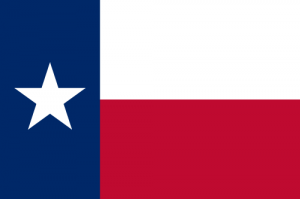Population of California 2014
Based on the total number of births, total number of deaths, net migration rate in the state, and the population of 2013, the current population of California is estimated to be about 39,309,017, which makes up 12.2% of the total population of the United States. As a result, California is the most populous state in the country, ahead of Texas and New York. As of July 1, 2013, the population was estimated to be about 38,332,521. Thus, since July of 2013, the population has grown by 976,496 people or a growth rate of 2.55%. Since the census was conducted in 2010, which recorded the California population at 37,253,956, the population has grown by 2,055,061 or 5.5% growth rate. Based on the total land area and the total population, the population density of 92.72 people per square kilometer or 240.13 people per square mile.
Government of California 2014
The government of California is considered to be a republic, made up of three branches: executive, legislative, and judicial. The executive branch consists of the Governor and other elected officials. They serve four-year terms and can only be re-elected once. The current Governor of California is Democrat Jerry Brown. The state legislature has forty members in the Senate and eighty members in the Assembly. The members in the Senate can only serve two terms and members in the Assembly can only serve three terms. The judicial system is based on English common law, but has some similar features to Spanish civil law. The state allows for capital punishment and even has the largest death row population in the country. The judicial system is also the largest judicial system in the country, supervised by the justices of the Supreme Court of California. The Governor appoints the justices of the Supreme Court, but the voters decide whether to keep or replace the justices every twelve years. Throughout the past couple of decades, the state has moved from the Republican Party towards the Democratic Party. It tends to be known as a more liberal state along the political spectrum. Lastly, in October 2012, approximately 18.2 million out of 23.8 million eligible voters were actually registered to vote. Registered Democrats represent the largest registered group of voters.
Lesbian, Gay, Bisexual, and Transgender (LGBT) Rights in California 2014
California has consistently been one of the biggest battlegrounds and most progressive states in terms of lesbian, gay, bisexual, and transgender rights. Same-sex sexual activity has been legal in the state since 1976. In November of 2008, the voters chose to ban the legalization of same-sex marriage, colloquially known as Proposition 8. However, in June of 2013, the Supreme Court of the United States issued a ruling that essentially struck down the ban of Proposition 8, which thus allowed same-sex marriage to take place in California. Another recent effort in this progressive movement is the School Success and Opportunity Act, which took place in January of 2014. The Act that all classes and activities in California schools must take into regard the gender identity of the student instead of the physical gender identity, which includes the use of gender-specific bathrooms and the inclusion in gender-specific sports teams. Lastly, as of August 29, 2013, there is a ban that prohibits sexual orientation change efforts, otherwise known as conversion therapy.
Education in California 2014
California passed an amendment to the Constitution in 1988 that required a certain percentage of the budget every year to be allocated to education for grades K-12. The level of funding is based upon three tests: from 1988 to 1989, education must be 39% of the budget; in times of economic growth, spending must be equal to the previous year’s spending plus per capita growth and student enrollment adjustment; and in times of weak economic growth, spending must be equal to the previous year’s spending plus adjustment for enrollment growth, changes in per capita general fund revenues, and an increase by 0.5% in state general funds. An education reform group, StudentsFirst, has studied the education systems of the states. As of 2013, on a 4.0 scale similar to the grading scale in schools, StudentsFirst gave California a 0.69 grade-point average and ranked 41st out of the 50 states. The organization gave a failing grade to the California schools for the ability to empower parents and the ability to improve the teaching profession. They also gave the schools a D for education spending and their efficiency and ability to intervene in low-performing schools. Lastly, the Dropout Recovery and Prevention Act is a law passed by the government intended to help lower the high school dropout rate. Due to its success, they expanded the law in 2004 in order to help motivate students, give them alternatives to traditional education, and to help improve their reading and writing abilities to empower students.
Water in California 2014
The water system in California is considered to be one of the largest in the world, managing over 40,000,000 acre-feet of water every year. The system also irrigates over 5,680,000 acres of farmland. Water comes from two main sources in the state: surface water and groundwater. Surface water is considered the water that gathers or travels on the ground, while groundwater is the water that has been pumped out from the ground. The six main infrastructure systems are the State Water Project, the Central Valley Project, Colorado River Delivery System, Los Angeles Aqueduct, Tuolumne River/Hetch Hetchy System, and the Mokelumne Aqueduct. Some controversies surrounding water usage included the California Water Wars and the O’Shaughnessy Dam. The California Water Wars involved the purchase of 300,000 acres of water by the city of Los Angeles from the Owens Valley. As a result, the Owens Valley is no longer arable and farmable. Lastly, because of the projections of the populations in California, many people are worried about the water supply and about whether or not it will be an adequate supply for the large population.
Dream Big in California 2014
Energy Usage in California 2014
Due to the large population in California, California is also a large user of energy. However, between the high, energy rates, mandates due to conservation efforts, and an environmental movement, the energy usage per capita is actually one of the smallest in the country (in 2010, it ranked 48th). But, as of 2011, the country ranked third in the country in terms of crude oil production and refining capacity. The transportation sector uses the highest level of energy (38.3%), followed by the industrial sector (22.8%). The residential sector consumes 19.3% of the total energy in the state. Also, the industrial electricity prices are 73% higher than the average cost in the United States. The residential electricity prices are 39% higher than the average cost in the United States. Lastly, the state has two major nuclear plants, but the voters have consistently voted against new plants over the course of the last fifty years. Some cities are even declared as nuclear-free zones.
Other Resources



 Population of Alaska 2014
Population of Alaska 2014 Cost of Living in Alaska 2014
Cost of Living in Alaska 2014 Population of Texas 2014
Population of Texas 2014 Economy of Texas 2014
Economy of Texas 2014